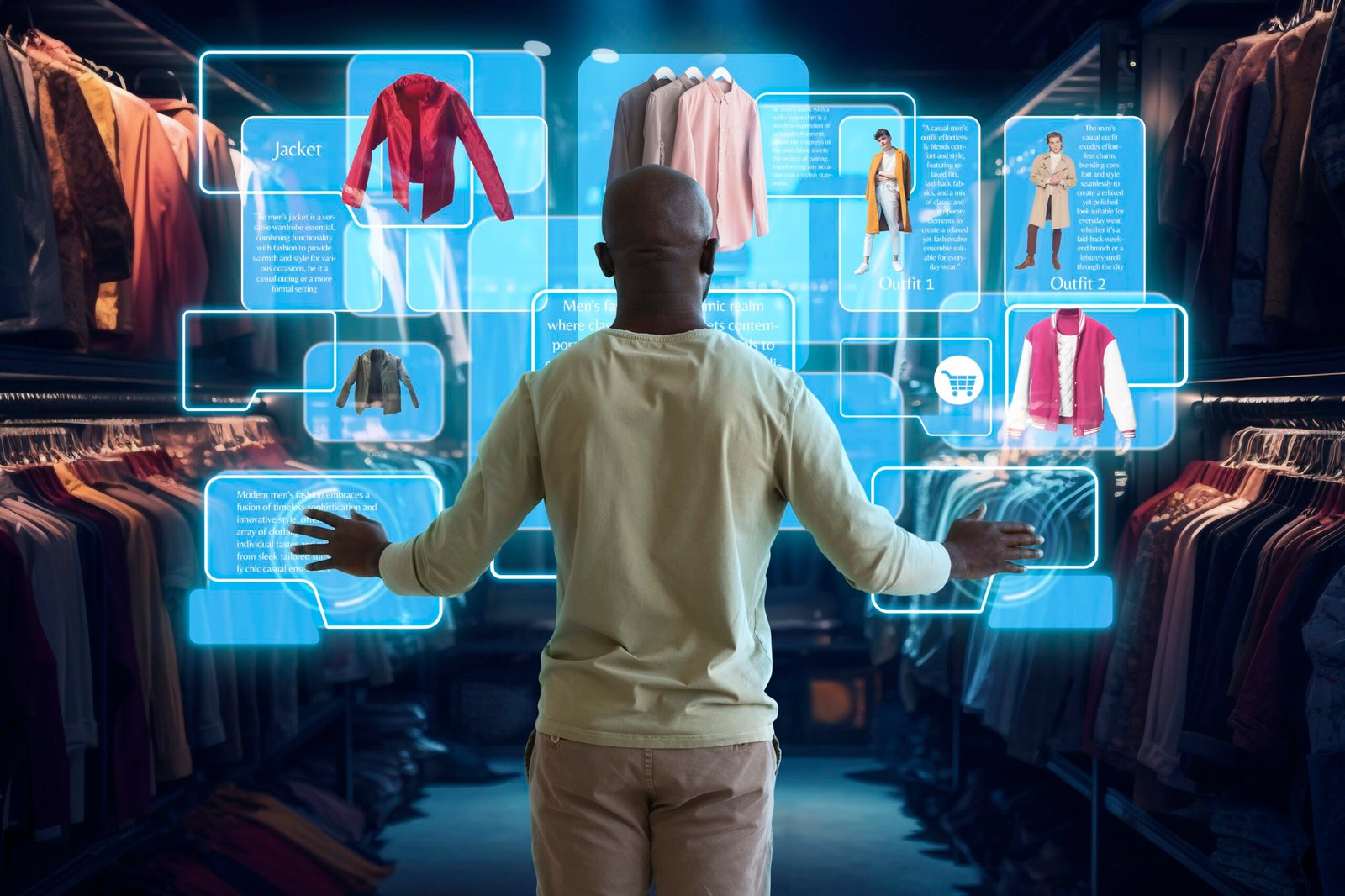Unveiling Consumer Trends in Today’s Market Landscape
Consumer Behavior: Key Trends and Insights in Consumer Goods Research

Introduction:
Understanding consumer behavior is crucial for companies in the consumer goods sector. This knowledge helps businesses tailor their products, marketing strategies, and sales approaches to meet the needs and preferences of their target audience. Recent research has revealed several key trends and insights that are shaping the consumer goods industry. This article delves into these trends and provides a comprehensive overview based on the latest studies and data.
Shifting Preferences Towards Sustainability
Consumer preferences are increasingly shifting towards sustainability. A Nielsen report highlighted that 66% of global consumers are willing to pay more for sustainable brands, with millennials leading this trend. This shift has significant implications for product development, packaging, and marketing.
Businesses are responding by adopting more eco-friendly practices. For instance, major companies like Unilever and Procter & Gamble are investing in sustainable packaging solutions. A McKinsey report indicates that sustainable products have experienced a fivefold increase in market share over the last decade. This trend is not just a fleeting fad but a fundamental shift in consumer behavior.
Brands are also prioritizing transparent communication about their sustainability efforts. Consumers are looking for authenticity and are quick to call out “greenwashing.” The rise of digital platforms has empowered consumers to research and verify company claims, making transparency a critical component of modern marketing strategies.
The Rise of Digital and E-commerce
The rise of digital and e-commerce has revolutionized the consumer goods industry. According to a Statista report, global e-commerce sales are projected to reach $6.54 trillion by 2023. This surge is driven by advancements in technology, increased internet penetration, and changing consumer habits.
Consumers now expect seamless, omnichannel experiences. This means that businesses must integrate their online and offline operations to provide a consistent and convenient shopping experience. For example, companies like Walmart and Target have successfully implemented buy-online, pick-up-in-store (BOPIS) options, enhancing customer convenience and driving sales.
Moreover, personalized marketing has become a critical component of e-commerce strategies. Utilizing data analytics, companies can tailor their marketing efforts to individual consumer preferences, increasing engagement and conversion rates. A Salesforce study found that 76% of consumers expect companies to understand their needs and expectations, making personalization a vital aspect of modern consumer behavior.
Health and Wellness Prioritization
Health and wellness have become significant priorities for consumers, especially in light of the COVID-19 pandemic. A PwC report revealed that 79% of global consumers are making health and wellness a top priority. This trend is influencing product choices, with an increased demand for organic, natural, and clean-label products.
Brands are responding by innovating and expanding their portfolios to include products that cater to health-conscious consumers. For instance, the rise of plant-based diets has led to a surge in plant-based food and beverage options. Companies like Beyond Meat and Oatly have seen exponential growth as consumers seek healthier and more sustainable alternatives.
Additionally, the wellness trend is extending beyond food and beverages to encompass lifestyle and personal care products. Consumers are looking for holistic wellness solutions, including fitness and mental health products. This broadening of the wellness market presents new opportunities for brands to connect with consumers on a deeper level.
Influence of Social Media and Influencers
Social media and influencers have become powerful forces in shaping consumer behavior. According to a Hootsuite report, 55% of consumers use social media to discover new brands and products. Platforms like Instagram, TikTok, and YouTube are not only entertainment sources but also powerful marketing tools.
Influencer marketing, in particular, has proven to be highly effective. A Mediakix study forecasts that influencer marketing spending will reach $15 billion by 2022. Consumers tend to trust recommendations from influencers they follow, often more than traditional advertising.
Brands are leveraging this trend by collaborating with influencers to create authentic and engaging content. Micro-influencers, who have smaller but highly engaged followings, are particularly valuable for targeted marketing campaigns. This strategy allows brands to reach niche audiences and build stronger relationships with consumers.
The Demand for Convenience and Speed
In today’s fast-paced world, consumers prioritize convenience and speed. A Deloitte report found that 75% of consumers value convenience highly in their shopping experience. This trend is driving innovations in delivery options, payment methods, and customer service.
Same-day and next-day delivery services have become standard expectations for many consumers. Companies like Amazon have set the benchmark with their Prime service, pushing other retailers to enhance their logistics capabilities. The rise of quick-commerce platforms like GoPuff and Instacart further underscores the demand for rapid delivery.
Additionally, contactless payment methods and automated customer service solutions are becoming increasingly popular. The COVID-19 pandemic accelerated the adoption of these technologies, with consumers seeking safer and more efficient ways to shop. Businesses that prioritize convenience and speed are more likely to retain customer loyalty in the competitive consumer goods market.
Conclusion:
The landscape of consumer behavior in the consumer goods sector is continually evolving, influenced by trends such as sustainability, digital transformation, health and wellness, social media, and the demand for convenience. Companies that stay ahead of these trends and adapt their strategies accordingly are better positioned to succeed in this dynamic market. By understanding and responding to consumer preferences, businesses can build stronger connections with their audience and drive long-term growth.
Key Takeaways
- Sustainability: 66% of global consumers are willing to pay more for sustainable brands.
- E-commerce Growth: Global e-commerce sales projected to reach $6.54 trillion by 2023.
- Health and Wellness: 79% of global consumers prioritize health and wellness.
- Influencer Marketing: Influencer marketing spending expected to reach $15 billion by 2022.
- Convenience: 75% of consumers value convenience highly in their shopping experience.
FAQs
1. Why are consumers increasingly prioritizing sustainability?
- Environmental Concerns: Growing awareness about environmental issues.
- Ethical Considerations: Desire to support ethical business practices.
- Health Benefits: Preference for non-toxic, eco-friendly products.
- Source: Nielsen Report
2. How has the rise of e-commerce impacted consumer behavior?
- Convenience: Easier access to a wide range of products.
- Personalization: Tailored shopping experiences based on data analytics.
- Omnichannel Integration: Seamless transition between online and offline shopping.
- Source: Statista Report
3. What are the main drivers of the health and wellness trend?
- COVID-19 Pandemic: Increased focus on health and hygiene.
- Lifestyle Choices: Growing interest in fitness and mental well-being.
- Product Innovation: Rise in organic, natural, and clean-label products.
- Source: PwC Report
4. How effective is influencer marketing in today’s market?
- Trust Factor: Consumers trust recommendations from influencers.
- Engagement: Higher engagement rates with targeted audiences.
- Content Authenticity: Authentic and relatable content creation.
- Source: Mediakix Study
5. Why do consumers place high importance on convenience?
- Time-Saving: Simplifies the shopping process.
- Efficiency: Quick and easy access to products and services.
- Adaptation to Fast-Paced Life: Aligns with busy lifestyles.
- Source: Deloitte Report
6. What role does technology play in enhancing e-commerce?
- Data Analytics: Enables personalized shopping experiences.
- Mobile Commerce: Increasing use of smartphones for shopping.
- Payment Solutions: Adoption of contactless and digital payment methods.
- Source: Statista Report
7. How important is transparency in sustainability efforts?
- Consumer Trust: Builds trust and credibility with consumers.
- Authenticity: Avoids accusations of greenwashing.
- Research Capability: Empowered consumers verify company claims.
- Source: McKinsey Report
8. What are the benefits of omnichannel retailing?
- Customer Experience: Provides a seamless shopping experience.
- Sales Growth: Increases sales opportunities across multiple channels.
- Brand Loyalty: Enhances customer satisfaction and loyalty.
- Source: Salesforce Study
9. What impact has the COVID-19 pandemic had on consumer behavior?
- Health Consciousness: Greater focus on health and wellness products.
- E-commerce Surge: Increased reliance on online shopping.
- Safety Measures: Preference for contactless transactions and deliveries.
- Source: PwC Report
10. How can businesses leverage social media to influence consumer behavior?
- Brand Visibility: Increases brand awareness and visibility.
- Customer Engagement: Facilitates direct interaction with consumers.
- Market Insights: Provides valuable data on consumer preferences and trends.
- Source: Hootsuite Report
This comprehensive overview of consumer behavior trends provides valuable insights for businesses in the consumer goods sector, helping them to adapt and thrive in an ever-changing market landscape.








